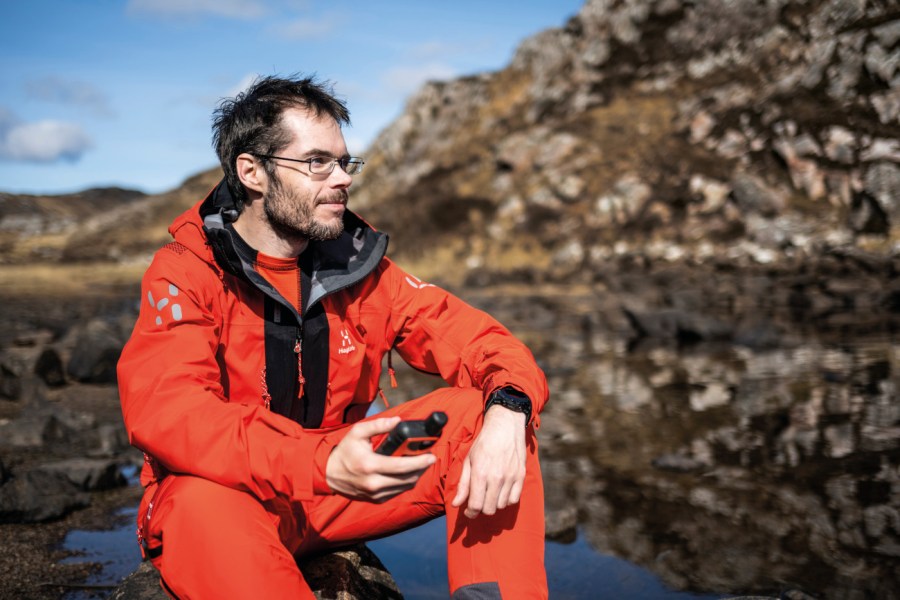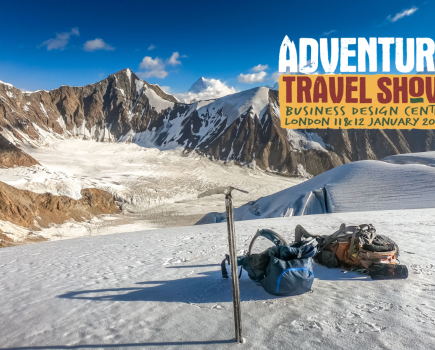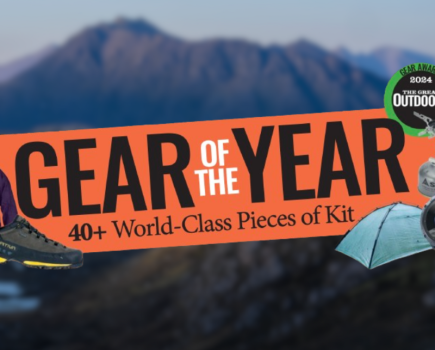In the ‘shoulder seasons’ of spring and autum, weather can vary wildly, and picking the right clothing can be challenging. Here Alex Roddie gives some general tips, and walks us through the Haglöfs L.I.M Series Z|T, which is built to cope with extremes…
This is a sponsored article in partnership with our friends at Haglöfs
When hillwalking and backpacking in the Scottish Highlands (and Britain’s mountains generally), a huge variety of conditions can be encountered at any time of year, but the shoulder seasons – spring and autumn – can be most challenging of all.
Barring a few surprises, you pretty much know what you’re going to get in summer or winter if you’ve been paying attention to the forecast. Things can be a lot more uncertain in the in-between seasons, though, and this can really test your knowledge and equipment.
Atlantic storms are common in autumn; in the spring, temperatures and precipitation can fluctuate rapidly, defying predictions. To stay on top of this you need to be adaptable.
But there is no need to fear the shoulder seasons. In fact, I think this is where the magic happens! In all my years of wandering the Scottish hills, many of my most memorable trips have taken place in spring and autumn.
Spring can be a particularly glorious time of year, especially in remote parts of the Highlands and on the bigger peaks. The snow recedes, but remains on those high north faces, lending a chilly Arctic vibe to the landscape.
Temperatures climb high enough to let you leave most of the winter gear behind, but not so high that you can comfortably go ultralight. It’s a time of year for bigger routes once again – but with a flavour of ruggedness and exploration.
Although I don’t always plan my routes meticulously, I do put a lot of thought into my gear at this time of year, because I know what it’s like to be caught out. In May 2016, walking across Scotland, I wasn’t adequately equipped for a savage snowstorm when crossing the Ben Alder Munros, and descended to the bothy with ice in my beard, feeling as if I’d just crossed a war zone.
Being prepared doesn’t mean you have to pack the kitchen sink. Lightweight backpacking is still quite easy in spring, but I will usually err on the side of caution and my pack will weigh 1-2kg more than it would in high summer. On the plus side, you won’t have midges to worry about!
- Shelter: Unless there’s a perfect forecast with high confidence, I like a shelter that can stand up to high winds and heavy rain – either a pyramid tarp with inner/bivvy
bag or a lightweight one-person tent. High-quality tent pegs are important too. - Hat/gloves: In summer I can sometimes get away with just a sun hat, but in spring I will always carry at least one pair of warm gloves, a Buff, woolly hat, and a sun hat –and I’ll often use them all on the same day.
- Pack: I’ll carry a bigger pack in spring to accommodate more layers and bulkier gear. Everyone’s different, but I find that a 40-50L pack is often best for overnighters, or up to 60L if tackling a longer trip.
- Winter hardware: It can be a challenging call to make. Ice axe and crampons, and the knowledge to use them safely, are often needed well into spring on the highest peaks. Use online resources such as the Scottish Avalanche Information Service (sais.gov.uk) to assess current conditions. I’ll often bring very lightweight alloy axe and crampons along in spring, as I won’t expect to use them for long periods.
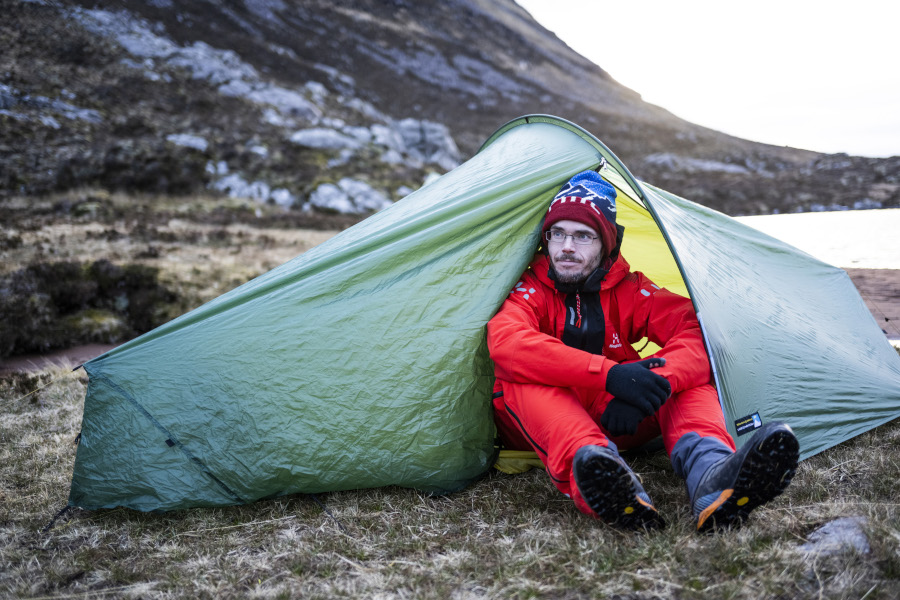
The start of a chilly night and wild camp by Loch na Barrack.
The gear: Haglöfs L.I.M Series Z|T
Alex recently backpacked a spectacular circuit in Scotland’s wild Assynt region, including a climb of Suilven, arguably the most beautiful mountain in Britain. Here’s what Alex wore on the trip…
1. Waterproof shell: L.I.M Z|T Mountain GTX PRO Jacket
When I’m uncertain about the weather, I prefer not to rely on an ultralight waterproof. A burlier shell made from three-layer Gore-Tex gives better protection in unexpected storms, but I’ll rarely need a winter jacket.
Exceptional breathability is important, too, in rapidly changing conditions. I’ll often find myself working hard uphill in warm sunshine whilst still wearing my shell, waiting for the next squall.
The L.I.M Z|T Mountain GTX Pro Jacket does all this with aplomb. Despite offering a reassuring level of protection thanks to 40D Gore-Tex Pro stretch 3-layer fabric, I found breathability nothing less than remarkable (RET <13), meaning less faffing about with layers and more time enjoying the mountains.
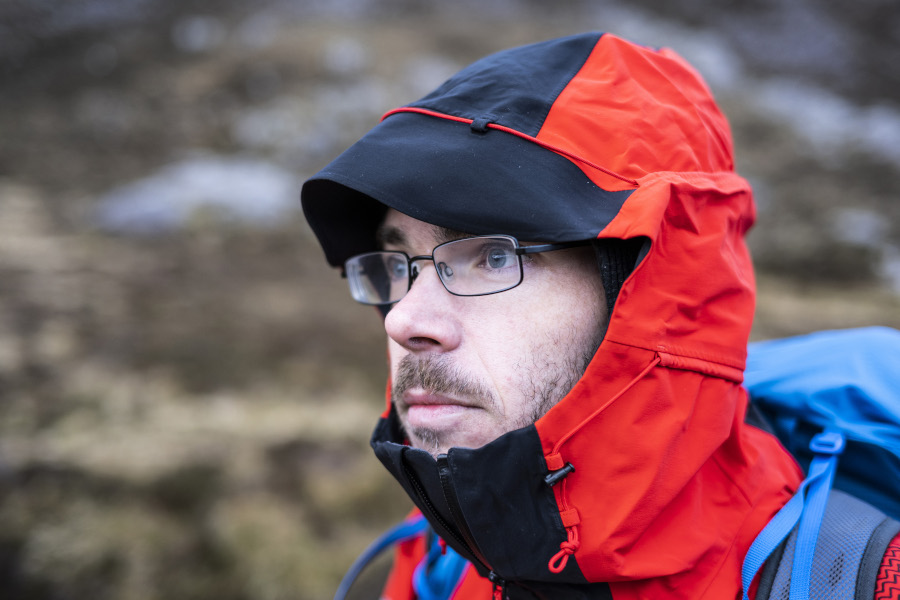
The hood on the Haglofs L.I.M ZT Mountain GTX PRO Jacket.
2. Waterproof trousers: L.I.M Z|T Shell GTX PRO Pant
These waterproof trousers coupled an amazing degree of flexibility with the breathability advantages of the Mountain GTX Pro Jacket (they are made from the same Gore-Tex fabric). Long side zips made it easy to quickly pull them on over big mountain boots.
Durable patches on the insides of the lower legs would offer excellent protection against crampon damage, should crampons be needed, and the fabric had just enough stretch to make them comfortable on the scrambly rock steps.
3. Midlayer: Haglöfs L.I.M Z|T Sync 1 Mid Hood
I would never go backpacking in spring without both a warm midlayer and an insulated jacket. The midlayer is, arguably, the most important piece, as you will be wearing it far more often than you would in summer.
The Sync 1 Mid Hood has a few interesting qualities that made it ideal for the conditions we found on Suilven. It’s made from a combo of Polartec Power Air and Polartec Power Dry (both 100% recycled polyester), and the resulting open-mesh weave meant that moisture build-up was never a problem.
The close-fitting hood felt warm and snug too.

Haglofs L.I.M ZT Sync 1 Mid Hood
4. Baselayer: Haglöfs L.I.M Z|T Base
This was my favourite piece in the set. Stretchy Polartec Power Grid fabric for moisture transport, and a design long enough to tuck into your trousers – ideal for cooler conditions.
It worked perfectly with the Sync 1 Mid Hood to keep me dry and comfortable.
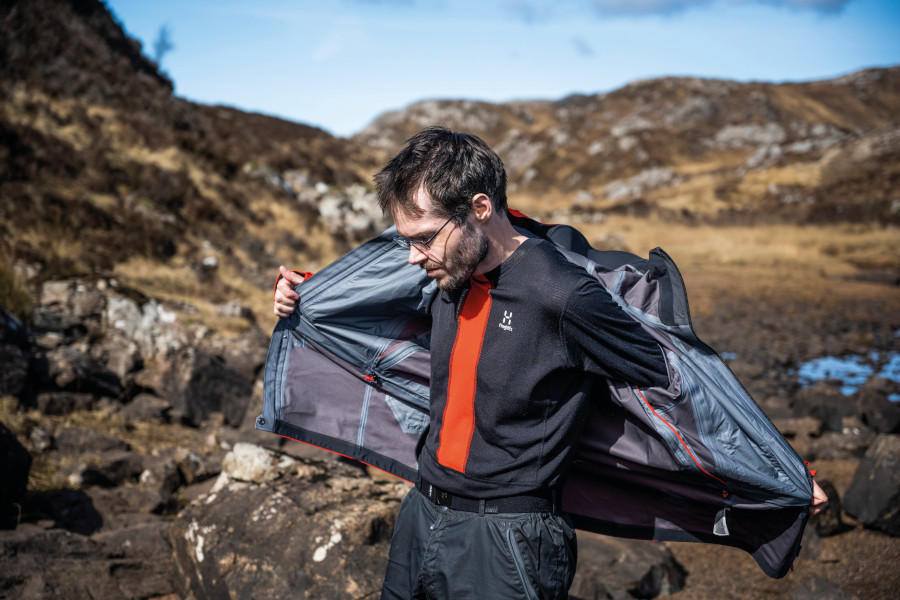
The Haglofs L.I.M ZT Base layer.

